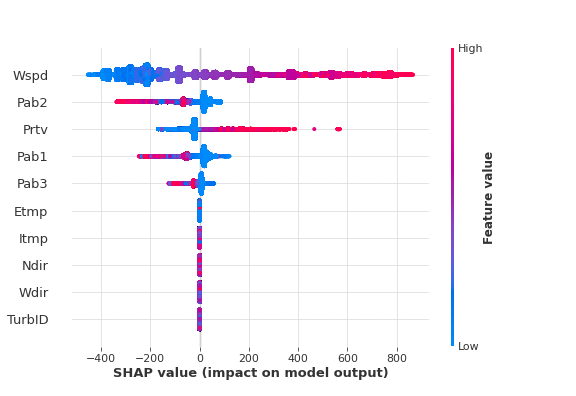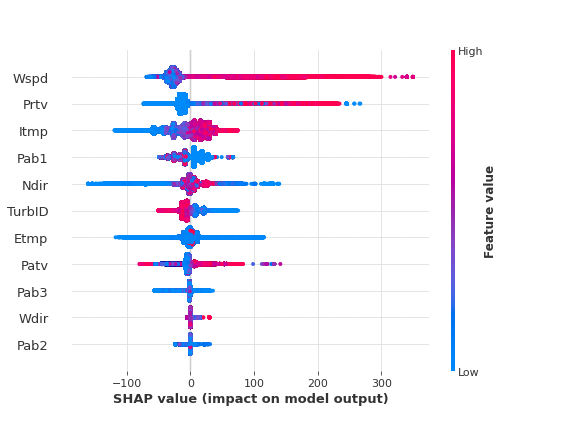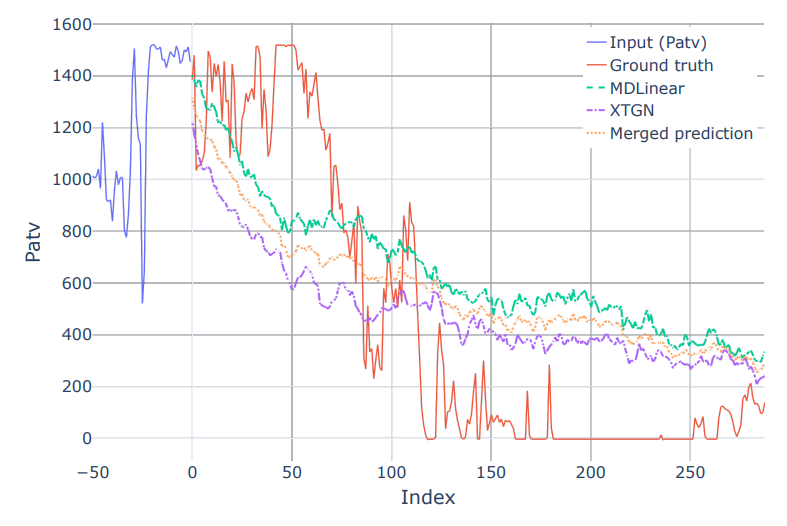Wind Power Forecasting
KDD Cup 2022 Spatial Dynamic Wind Power Forecasting challenge (6th place)
Challenge Overview
The KDD Cup 2022 competition aimed to predict the wind power output of a wind farm across various time horizons. Accurate wind power forecasting is crucial for integrating wind energy into grid systems, given the inherent variability of wind. Wind power forecasting has been widely recognized as one of the most critical issues in wind power integration and operation.
Key details of the competition include:
- The wind farm comprises 134 wind turbines.
- Each turbine provides a time series with 10-minute intervals and 10 features.
- The task requires predicting wind power from 0 to 48 hours into the future (288 steps) at each timestep.
- The spatial locations of the wind turbines are provided.
- Approximately 2,500 teams participated in the competition.



Proposed Solution

Our proposed solution, detailed in (Kalander et al., 2022), combines two innovative models. A brief overview is also available in a YouTube presentation. The approach integrates:
- Modified DLinear (MDLinear): An enhanced adaptation of the DLinear model (Zeng et al., 2023).
- Extreme Temporal Gated Network (XTGN): A novel architecture built by stacking gated temporal convolutional networks (TCNs) (Dauphin et al., 2017; Lea et al., 2016) and incorporating nearest-neighbor information diffusion.
Both models employ a masked loss function to handle missing, unknown, or anomalous values effectively. Our solution achieved a remarkable 6th place out of approximately 2,500 competing teams.
References
2023
- Are Transformers Effective for Time Series Forecasting?In , 2023
2022
2017
- Language Modeling with Gated Convolutional Networks2017
2016
- Temporal Convolutional Networks for Action Segmentation and Detection2016